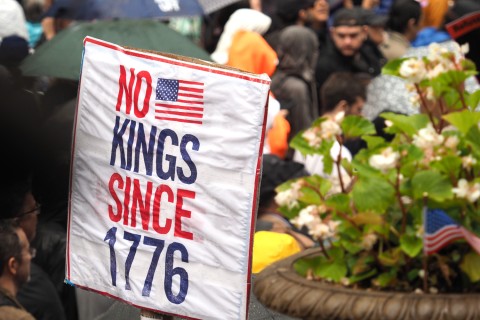Meaningful voting
At a recent Rose Garden ceremony, former President Jimmy Carter presented President George W. Bush with the final report of the National Commission on Federal Election Reform. This high profile event took place only a few weeks after the release of the Constitution Project’s report on election reform and a Cal Tech/MIT study on election technology. Many hope that the combined weight of these reports will help spur Congress to action on election reform legislation when it reconvenes in the fall.
But it’s possible that the most important change is coming regardless of what happens in the next legislative session. The 2000 election might have spelled the beginning of the end of the traditional polling place. We should make sure that does not happen.
Maintaining the traditional polling place does have some obvious problems. First of all, it’s expensive. Poll workers must be trained and supervised, usually with every new election, and almost all are paid something for their efforts. Voting equipment costs money, too. Though it is used, at most, only a few times every four years, it must be purchased, stored and maintained. Introducing new technology may make voting simpler, but it will also cost the average county millions.
What’s more, election directors increasingly struggle to find people to work the polls. The long lines that many saw last November weren’t due to higher turnouts (nationwide, voting rates rose less than 2 percent). More often, they resulted from a decline in the number of poll workers available to move voters through the process.
Finally, many have already discovered that they don’t need the polling place to vote. Throughout the nation, absentee-voting rates skyrocketed in the 2000 election. In some precincts they accounted for one-third of all votes cast. These voters aren’t primarily military personnel or corporate expatriates. Many never slept anywhere but in their own beds. Faced with the hassle of long commutes, long ballots and long lines, they decided to vote on their own time. Every indication is that more will follow next time around.
This combination of factors explains why Oregon has established a vote-by-mail system. Last year was a litmus test, and election directors there seem happy with the results. They no longer have to worry about absent or ill-trained poll workers, and they can conduct an election for about a third of the cost. Voters also appear satisfied; Oregon's voter turnout rates rose by about 10 percent.
But there is a downside. Voting at the polling place is not just a formality; it's an important civic ritual. Receiving your ballot from your neighbor, with the flag in view, and then standing next to your neighbors as you cast your vote--all of this reminds us that we are citizens, that we are equal, and that we have common concerns and responsibilities. We need reminders like this. We also need to teach these lessons to our children. Since so many polling places are at schools, voting gives us this opportunity as well.
Sure, we go to the polling place infrequently--but doing so is at the core of democracy. We shouldn't understate the importance of how we go about doing it.
Over the past generation, we have seen many civic rituals fall by the wayside. As a nation, we show little interest in participating in political campaigns (except by visiting a check), we try ardently to get out of jury duty, and national holidays like Presidents' Day and Memorial Day have become little more than marketing opportunities. The recession of our civic sense is already well advanced. The disappearance of the polling place would serve as another indication that, to use the new president's words, we occupy a continent, but not a country.
While concern about polling methods remains high, we should press for reforms that address the problems but preserve the civic dimensions of voting. In most democracies, Election Day is a national holiday. Why can't we make it one? Alternatively, we could expand voting hours and make them more uniform. Finally, corporations or colleges could sponsor and reward those who serve as poll workers.
None of these reforms would make voting at a polling place cheaper than voting by mail. But democracy should not be judged by standards of efficiency. As we consider electoral reform, we should remember that voting is about more than just casting a vote.





